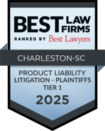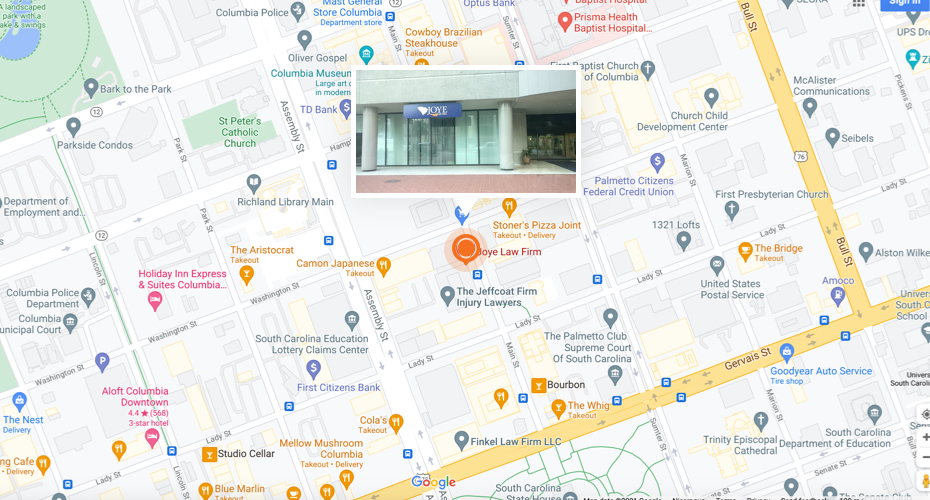In March of 2002, John Morgan* and his wife, Wendy, went out to dinner. John had been working all day and, despite a cold, was looking forward to a quiet dinner with Wendy. Before their table was ready, John ordered a vodka and tonic. He took his drink and went to the table, ordered and ate appetizers and then a full meal. During dinner John drank a second vodka and tonic.
After finishing dinner, they left to drive home. After driving approximately 20 minutes, John noticed blue lights flashing in his rearview mirror. He quickly turned into a nearby parking lot. Officer Jones* approached the car and asked John to produce his license, registration and proof of insurance, which John promptly produced. He then advised John that he smelled alcohol coming from inside the car. John told the officer that he had drank two vodka drinks with dinner.
Officer Jones then asked John to step outside the car. Once he was outside the car, John was asked to follow a pen that Officer Jones was holding with his eyes. John did so with no comment from officer Jones. Officer Jones then explained and briefly demonstrated an exercise which required John to walk along an imaginary line while making heel to toe contact on each of nine steps and then turn around and walk nine steps back to the starting position. John walked nine steps taking care to make heel to toe contact on each step, but as John turned around, using a series of short steps, as the officer had instructed him, he stumbled but maintained his balance, and continued the exercise until he reached the starting point. Officer Jones then instructed John to raise the leg of his choice and hold it six inches above the surface and maintain his balance while counting by 1000’s until officer Jones told him to put it down. John raised his right leg and held it up as he counted out loud, but he started coughing after 15 seconds and dropped his foot to the ground. Officer Jones then told him to turn around and place his hands behind his back. He then placed handcuffs on John’s wrists and advised John that he was under arrest for driving under the influence.
John said “everything that happened after that was a blur. I could not believe that I was being arrested.” When John arrived at the police station, he was taken into a room with “a somewhat antiquated looking machine” on the table and was told that he would be offered a breath test. The officer told John that he would not have to take the breath test if he chose not to do so, but that his drivers’ license would be suspended. He was also told that if he took the test and the machine reported a result of .15 % or higher his license would also be suspended. John said, ” I wanted to be fully cooperative with the officer, and knew that I had only consumed two mini bottles of vodka, so I decided to take the breath test.” That was a decision that John regretted once the machine reported a result of .18%.
Upon being released from jail the next morning, John and Wendy sat down and discussed his situation. John provided the majority of the financial support for the family. He feared that a DUI conviction would likely cause him to lose his job, and cost his family everything they had. He decided that he had too much to lose and decided that he had no choice but to fight the DUI charge.
John called the Joye Law Firm. “I was very impressed by the prompt attention I received. From the very first phone conversation I got the impression that these people understood my situation and were concerned with helping me solve this problem,” John said.
John was then interviewed by attorney Reese Joye. After the interview, attorneys Reese Joye and Drew Carroll began to work on defending John at trial. All attempts at negotiating the charge to a lesser offense failed due to the high breath test result. In preparation for trial, attorney Drew Carroll drove the route that John traveled the night of his arrest several times. He made a videotape of the route and the area where Officer Jones alleged a traffic violation in his incident report. The videotape offered compelling evidence that the violation could not have happened the way it was described in the report. Attorneys Carroll and Joye and investigator A.A. Williams each reviewed the breath test videotape several times and concluded that the test result was inaccurate. Attorney Drew Carroll said, ” Based on the factual information that we had about John’s alcohol consumption, we knew that there was a disconnect between his actual blood alcohol level and the level reported by the machine. A review of the videotape from the breath test room revealed several fundamental problems with the way that the test was administered, which significantly affected the reported result. In addition to the problems with the test itself, Reese and I have both undergone extensive training on this machine, which enabled us to raise relevant issues related to the machine at trial. I would say that Reese is probably one of the foremost defense experts on breath-testing in the country, and that made a big difference in John’s case.”
The case was called to trial and after over eight hours of testimony, the jury returned a verdict of not guilty. Johns said, “I felt like I was walking on air as I walked out of that courtroom. Those guys were able to prove, what I already knew, – that the [breath test] result was flat-out wrong. I felt like they gave me my life back.”
* This is not the actual name of the party involved in this case.







































